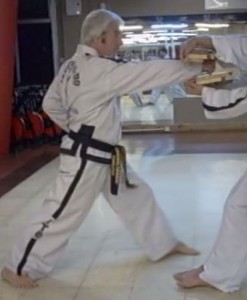
Human inventiveness is constantly surprising. The martial art known as Taekwon-Do, founded and developed by Gen. Choi Hong Hi, has undergone all kinds of modifications since his death: biomechanical, procedural, systemic, and administrative. However, a new way of referring to it has emerged from one of the many organizations claiming to develop it.
Until recently, this group claimed to be the official Taekwon-Do, but once it became clear that only an entity funded by public money and representing the state can be called official, they stopped using this adjective. One implication of claiming to be official was that selected competitors could demand coverage for travel and accommodation costs to represent the country (as part of an «official» delegation). Consequently, they stopped being official.
In response to this speculative mislabeling of a federation whose registration status is uncertain, a new ruse has emerged to differentiate itself while retaining a similar connotation. The new term used by this organization is «legal.» They self-proclaim as the legal Taekwon-Do, implicitly labeling others as illegal.
If we analyze the meaning of the word legal, the dictionary indicates it is an adjective meaning prescribed by law and in accordance with it. The question arises: what law has been enacted that designates this company as the heir to the founder’s legacy, disregarding all others (48)? Where and when was this law promulgated?
These questions have no answers. Therefore, there is no legal Taekwon-Do related to the creation made by its founder.
The only sporting activity under the name Taekwondo included in the Olympics is developed by the World Taekwondo Federation (WT). This federation can be called official and legal because its representatives are official representatives of their respective countries, and the entity itself is legal because it has been legislated to be recognized as the representative of the Olympic sport called Taekwondo.
This truth is painful for those of us who have supported and developed since its early days in the West the martial art called Taekwon-Do, founded by Gen. Choi Hong Hi. However, it is the truth; the rest is speculative. The rapprochements between South and North Korea are only goodwill missions (these countries have been in unresolved conflict since 1953) but have yielded no concrete results for the martial art or the sport.
The Founder of the art wrote an encyclopedia and his memoirs. Among the many interviews he gave and the many videos of his seminars, he is shown without double-talk. For me, what he narrated about the art’s history is sufficient. To doubt what is written in his books is to doubt his person. Why should I believe him when he talks about technical or philosophical development but not when he writes the history of what he did? If a 15-volume encyclopedia is not sufficient credit, it would be good for those who deny it to show their own.
In fact, speculative notes have recently appeared that cast doubt on what the Founder narrated in his literature. A political tinge emerges from them, contributing nothing to the practitioners or the body of instructors and Masters who develop the activity. While the General was alive, he had many critics, but none of them were significant. Moreover, none dared to confront him, despite his willingness to answer any questions posed to him.
As his translator into Spanish for interviews, seminars, and meetings with authorities, I can assert that he never had double-talk. However, there are always people willing to disparage his work and question his assertions now that he has passed away.
SGM Ricardo Desimone
